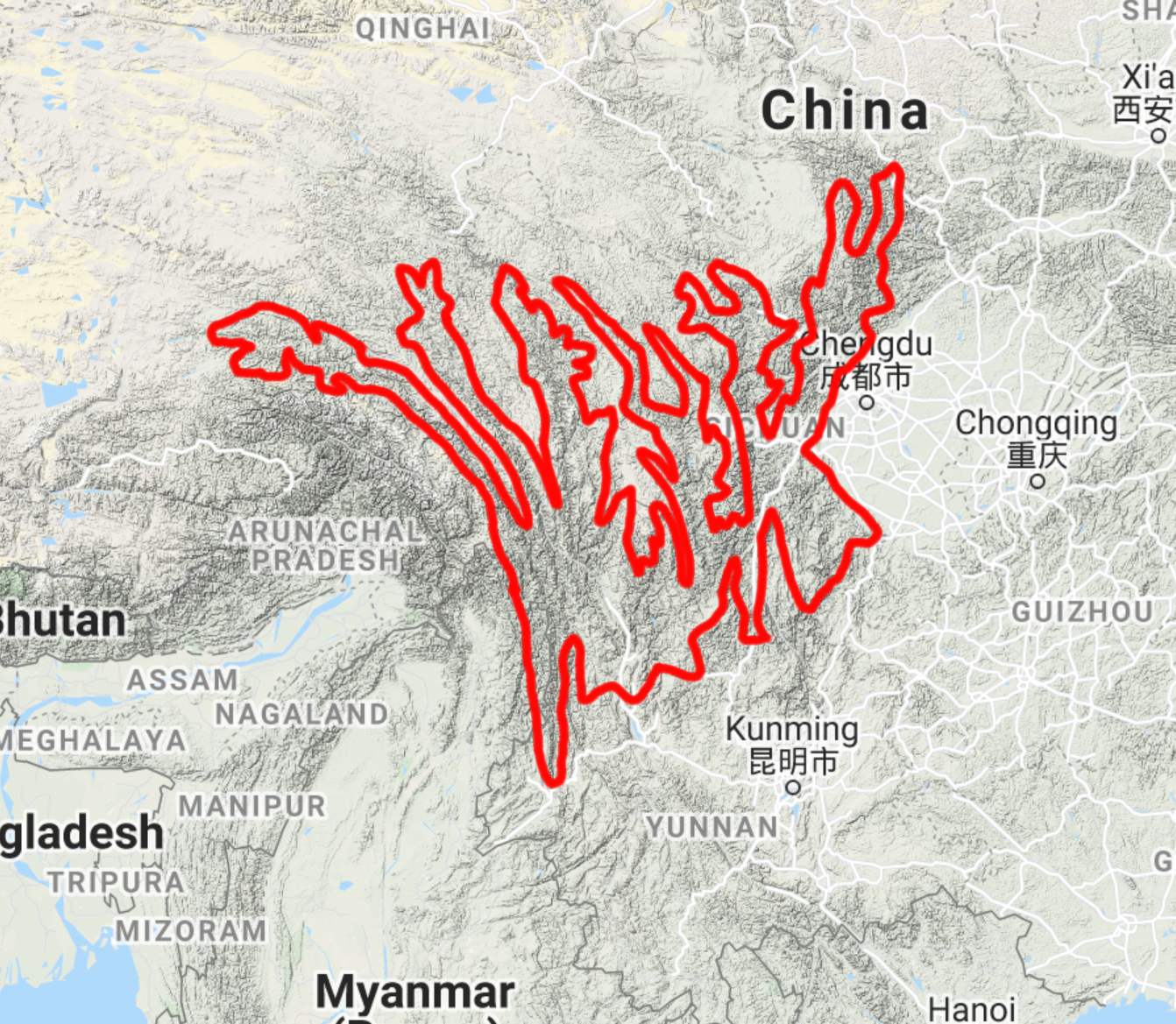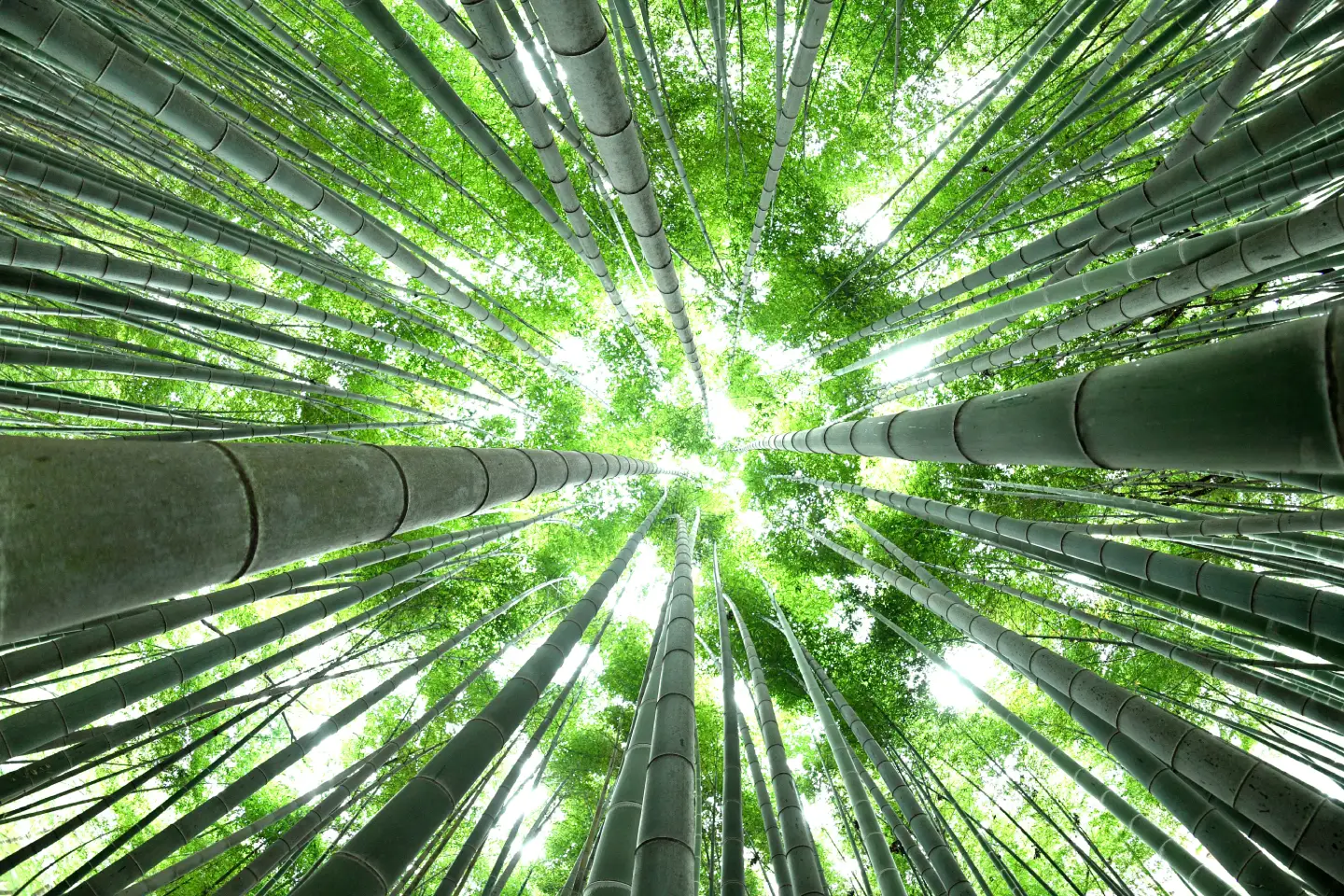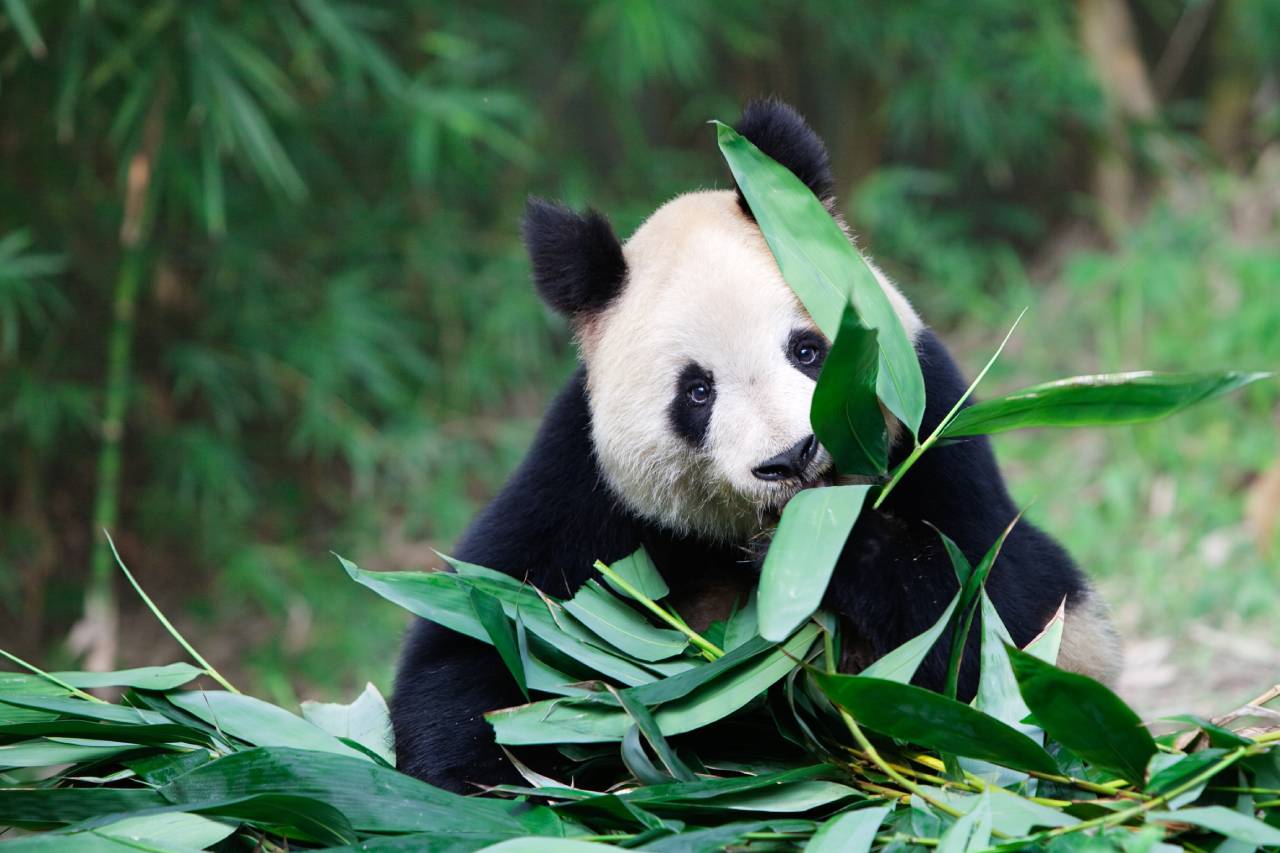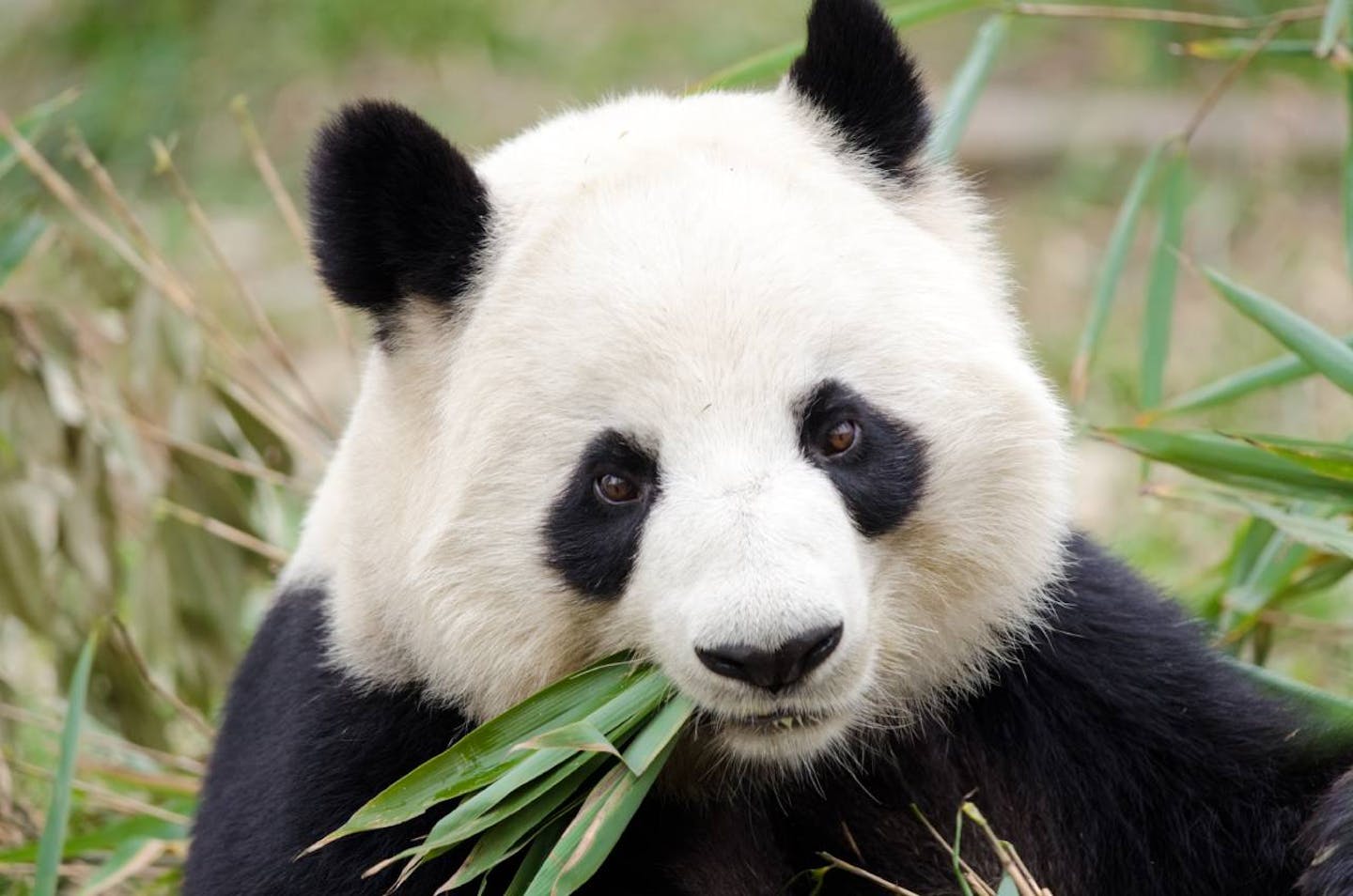Adored worldwide, giant pandas are also vital forest seed dispersers
- Nature Conservation
- Land Conservation
- Iconic Species
- Forests
- Wildlife
- Mammals
- Central East Asian Forests
- Eastern Eurasia Realm
One Earth’s “Species of the Week” series highlights an iconic species that represents the unique biogeography of each of the 185 bioregions of the Earth.
Known best for their black and white coat and rotund body, giant pandas are revered by the world and considered a national treasure in China. Their playful and clumsy nature makes them adorable stars in viral videos, while their diet of bamboo and movement through the forests makes giant pandas essential to their ecosystem.
Found only in the temperate mountain forests of southwest China, giant pandas (Ailuropoda melanoleuca) are also known as panda bears or simply pandas. However, the biologists avoid using the latter to distinguish them from red pandas, a musteloid species living in the same region.

The giant panda is the Iconic Species of the Hengduan Mountain Conifer Forests Bioregion (PA53).
Giant pandas grow between 1.2 to 1.9 meters in length (3 ft 11 in to 6 ft 3 in). Males can weigh up to 160 kg (350 lb), while females weigh as little as 70 kg (150 lb).
A distinct feature of the giant panda is its paw, consisting of a "thumb" and five fingers. This “thumb” is an elongated wrist bone that evolved to help the species grip bamboo more efficiently.
Bamboo shoots and leaves make up more than 99% of their diet. One giant panda eats around 26 to 84 pounds of it every day. This level of consumption helps prune the bamboo forest, which is one of the most important ecosystems on our planet.
The wonders of bamboo groves are numerous. They provide a habitat for various biodiversity, reduce land degradation, stabilize slopes, absorb heavy metals, sequester carbon, and have over 10,000 documented uses. A grove of bamboo is estimated to release 35% more oxygen than an equivalent grouping of trees, providing clean air for all to breathe.

Bamboo grove
Another role giant pandas play in their ecosystem is seed dispersers. Seeds and plant matter collect on their fur, which spread as they move throughout their habitat. They also swim and climb trees, which further helps circulate the seeds.
While they seem friendly, giant pandas are generally solitary, with each adult having a defined territory. Females are not tolerant of each other in their ranges, and the only social interaction occurs between males and females during the mating season between March and May.
Gestation is around 95 to 160 days, and female giant pandas give birth to twins in about half of pregnancies. However, in the wild, typically, only one survives, with the mother selecting the stronger of the cubs. This is thought to be because the mother, surprisingly, cannot store fat and thus adequately feed two cubs.

An old giant panda eating bamboo leaf
Newborns are pink, blind, toothless, and weigh only 90 to 130 grams. This is 1/800 of the mother’s weight and makes newborn pandas the smallest baby of any placental mammal proportionally.
The color of the cub's fur fully develops after about a month, and they begin to crawl after 75 days. They live with their mothers until they are about two years old.
Despite a lack of natural predators and worldwide admiration, giant pandas are at risk. Deforestation creates mass habitat loss and fragmentation, threatening the population of just over 1,800 giant pandas left in the wild.
However, this number is rebounding after years of decline, with a population growth of nearly 17% over the past decade. In September 2016, giant pandas went from “endangered” to “vulnerable” in conservation status.
While this is inspiring news that conservation measures work, it is a further call to keep the momentum going and protect vital species and their habitats. A world with giant pandas keeps bamboo forests healthy, air clean, and shows a bit of the silly side of nature.
Interested in learning more about the bioregions of Eastern Eurasia? Use One Earth's interactive Navigator to explore bioregions around the world.
Launch Bioregion Navigator


